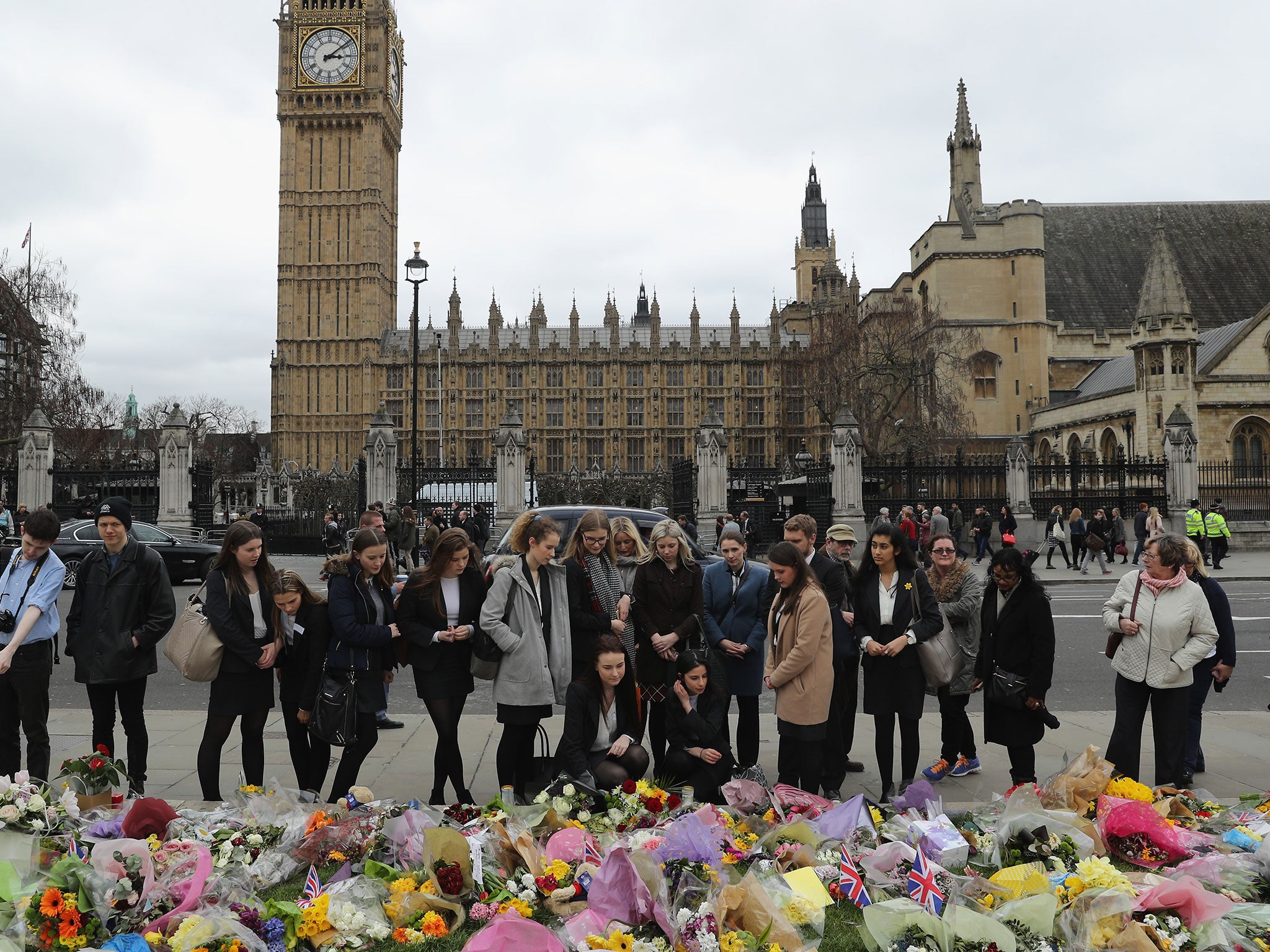Westminster attack inquests - latest updates: Coroner gives conclusions on how victims of terror attacker Khalid Masood died

The inquests into the deaths of the victims of the Westminster attack are due to conclude.
Chief coroner Mark Lucraft QC is due to give his conclusions at the Old Bailey on the deaths of four civilians and police officer Keith Palmer, who were murdered by terrorist Khalid Masood.
He will consider whether factors including security at the Houses of Parliament, the lack of barriers on Westminster Bridge, police body armour and security service investigations into Masood played a role in their deaths.
Please allow a moment for the live blog to load.
On Tuesday the court heard closing submissions, with Jonathan Hough QC, for the coroner, saying the inquests should conclude all five victims were unlawfully killed.
He said: “Each was murdered in a terrorist atrocity which was no less brutal for its lack of sophistication.”
Masood, 52, drove into pedestrians on Westminster Bridge on March 22 last year, killing American tourist Kurt Cochran, 54, retired window cleaner Leslie Rhodes, 75, Aysha Frade, 44, and Romanian tourist Andreea Cristea, 31.
He then stormed through gates near the Houses of Parliament and fatally stabbed Pc Palmer with two knives.
In his closing argument, Gareth Patterson QC, for families of victims on the bridge, urged the coroner to make a report on the circumstances of the case to “protect the public”.
On the role of MI5, whose knowledge of Masood has been heavily scrutinised, he said: “We do think there is room for improvement in terms of decision-making.”
He suggested security services should look again at when to investigate suspects and when to stop, and to take account of violent backgrounds.
Mr Patterson also called for the Government to “try again” with tightening rules for hiring cars.
Dominic Adamson, representing PC Palmer's widow Michelle, said that there was “a systematic failure” in protecting unarmed officers on guard at the Palace of Westminster.
He told the coroner: “In my submission it is very clear that you can be satisfied that as a result of those failures the consequences for Pc Palmer were that there was a substantial loss of the opportunities for him to be saved.”
No firearms officer had been near Carriage Gates, where Pc Palmer was on duty, for nearly an hour before Masood's attack.
Susannah Stevens, representing the officer's family, said: “If there had been authorised firearms officers present at that time, in our submission, on the balance of probabilities they would have been able to prevent a loss of an opportunity of saving Pc Palmer's life.
”Or to put it another way, on the balance of probabilities, their absence contributed to Pc Palmer's death.“
The court will hear further closing submissions in the morning, before the coroner begins giving his conclusions.
He said he was not told to and had not accessed a computer system on patrols since 2015.
A diplomatic protection officer also did not believe there was an obligation to be near Carriage Gates.
PC Sanders was aware of the system and knew he was under an obligation to access it, but had not used it in relation to duties at the Palace of Westminster because his instrutions were "entirely clear".
Judge Lucraft says instructions were for officers to remain at Carriage Gates with only a "short patrol" into New Palace Yard but the officers on duty did not believe that was their instruction.
CCTV shows them on patrol after 2pm but not near Carriage Gates, spending some time in the collonades because of "high profile individuals" in that area
The two armed officers moved towards the crash after hearing it and took cover before hearing shots fired.
By the time they saw Masood he had been shot. They found him and PC Palmer on the ground. CCTV shows them moving at a "walking pace", which one of the officers said was because they were carrying out a continuous assessment.
PC Sanders said that he would have taken a shot at Masood if positioned at the gate but only in "cerain circumstances"
Judge Lucraft says Commander Adrian Usher, who leads policing at the Houses of Parliament, says gates have since been updated
A January 2015 review stated that armed officers were to be stationed in "close proximity" to Carriage Gates when they were open and a second review in June that year recognised the gates as one of the weakest points in the Parliamentary perimeter
Conclusions in December said officers should work within sight of each other
Command Usher accepted that the 2014 placements included patrols on both sides of Palace Yard and another report that specifically raised the risk of officers being "rushed" at the gates.
A 2013 report noted the pedestrian entrance was vulnerable and recommended armed officers outside, then a 2015 report specifically identified a risk to officers at Carriage Gates
An email chain identified issues with patrols
The 2015 report also raised the prospect for arming officers with Tasers but the Metropolitan Police said training was "not possible"
Commander Usher said officers were told to access the ADAM system "regularly" but accepted there was no definition of how often that was
Commander Usher met with the two armed officers on duty that day and then reported them to the Department for Professional Standards for review. The DPS found they were patrolling in the wrong place but that their beliefs reflected those of the majority of AFOs, who were shown to rarely use the ADAM system by a survey
